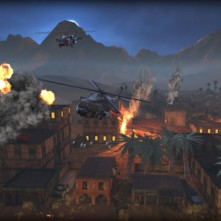The course of my life with the Apple II
| January 30th, 2012 11:56 AM by Ken Gagne | Filed under Musings; Comments Off on The course of my life with the Apple II |
Fellow Massachusetts retrocomputing enthusiast and all-around neat guy Dan McLaughlin recently started his own Apple II blog. He’s actually had one for awhile, but its latest incarnation is powered by WordPress, the unofficial CMS of the Apple II community. I discovered the relaunch of Dan site’s via the story of his introduction to the Apple IIGS:
[My father and I] pulled into the strip mall and entered The Computer Shop. In The Computer Shop, everything was gray: The carpet, the room dividers and shelving that held books and software, even the display tables. I take that back there was an accent color: beige. There might have been a touch of maroon in there as well. It smelled like new carpet even though it had been open for a few years. There was a large plate glass window from which sunlight was streaming in on this beautiful fall day.
After we had walked past the software displays, and aisles of computer books and magazines, near the back center of the store, I saw it. There for all to hear and to behold was the Apple IIGS.
Like Dan, I was introduced to the Apple II through my father. My family’s business is commercial real estate, and once upon a time, we had an authorized Apple dealer as a tenant. It’s for that reason more than any other that our first computer was an Apple IIe and not a Commodore 64 or one of the many other platforms of the personal computer revolution. My three older brothers and I all made use of the computer for school projects, personal correspondence, and especially games, but I cottoned to it like none other in the family: I taught myself programming (and in the process destroyed some software for which we had no backups), expanded the hardware, and became a part of the community on CompuServe. Whereas my three brothers went to college and got their first PCs, I got my first Mac, sticking with the only brand that I’d ever known. After college, I became part of a convention, a magazine, and a podcast, leading me to make friends, pursue education, develop skills, attain jobs, and relocate across the country.
Dan’s post reminded me how a financial decision made decades ago for practical and immediate reasons can have a snowball effect that we continue to experience and observe well into the 21st century. It’s no understatement my father’s fateful decision has defined the personal and professional development of my childhood and my adulthood. Although I can never know what timelines might’ve developed from bring a different microcomputer into the Gagné household, it’s an alternative I’m glad I never needed to explore.
How would your life be different with a computer other than the Apple II?















